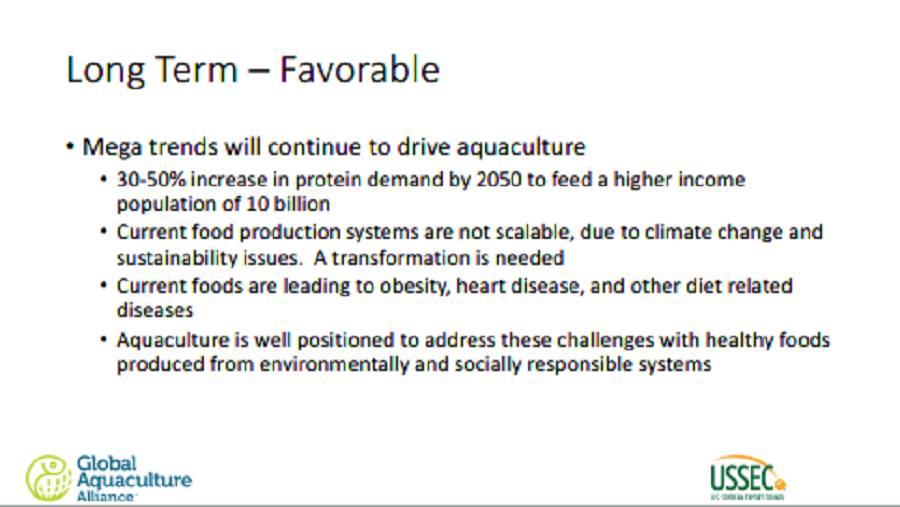In my first blog on this subject, I provided an overview of changes in U.S. Aquaculture over the five-year period between the 2013 USDA Census of Aquaculture and the 2018 USDA Census of Aquaculture. The second blog provided some insight into changes between the two census reports by species.
My plan for this blog was to cover the two largest categories of U.S. raised food fish, Trout and Catfish, in greater detail. However, I recently had the opportunity to attend a virtual conference sponsored by the U.S. Soybean Export Council (USSEC) on the 20th of May. According to their reports, “approximately 900 global customers and soybean industry representatives from 60 countries” attended the conference. The subject of the conference was “COVID-19 and the Implications to Aquaculture”.
I’ll cover the Trout and Catfish industry later, for now, I thought it would be more timely to go over a few highlights of the conference.
The moderator and host of the conference was Jim Sutter, USSEC CEO. He mentioned that USSEC has had an active program in aquaculture for 35 years with partners ranging from small fish farms in Asia to large international operations. The primary goal of USSEC’s involvement has been to “optimize and demonstrate the value and nutritional benefits of U.S. Soy in aquaculture diets”.
Some key takeaways from my notes and the slides presented are:
- Closing the food service sector (hotels, restaurants, and catering) in the countries hard hit by COVID-19 reduced seafood sales by 70%. This sector has been the major channel for seafood sales.
- There were severe losses in product due to curtailed or rerouted shipments.
- Consumers in Asian countries are finding that fresh, processed seafood can be as good as live and it is more convenient.
- Western consumers are learning to prepare seafood at home, which will boost overall consumption, even as restaurants are reopening.
There are some long-term trends that are favorable for global aquaculture. George Chamberlin, President – Global Aquaculture Alliance discussed some encouraging trends in aquaculture.

While the discussion was global in nature, the USA aquaculture industry should experience opportunities for growth in the future as American consumers realize the value of locally grown, processed and inspected seafood. As the industry grows, so does the opportunity for additional consumption of soybean products and other US grains that are valued fish food ingredients.

